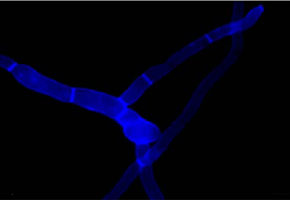

Attacks by the sugarcane borer—sugarcane’s main pest—cause the plant to produce proteins that act not against the insect but against a fungus, as reported in a study led by Brazilian researchers
Attacks by the sugarcane borer—sugarcane’s main pest—cause the plant to produce proteins that act not against the insect but against a fungus, as reported in a study led by Brazilian researchers.
Attacks by the sugarcane borer—sugarcane’s main pest—cause the plant to produce proteins that act not against the insect but against a fungus, as reported in a study led by Brazilian researchers.

Attacks by the sugarcane borer—sugarcane’s main pest—cause the plant to produce proteins that act not against the insect but against a fungus, as reported in a study led by Brazilian researchers
By Fábio de Castro
Agência FAPESP – A study conducted by Brazilian researchers shows that infestation by the sugarcane borer (Diatraea saccharalis), a caterpillar that is the main sugarcane pest, activates a gene that encodes a protein with a strong antifungal property.
The study, the results of which were published in Molecular Plant-Microbe Interactions, is part of a FAPESP Bioenergy Research Program (BIOEN) research project on the interactions between plants, microorganisms and insects.
The study involved scientists from the Universidade de São Paulo (USP) Luiz de Queiroz School of Agriculture (ESALQ), the USP School of Pharmaceutical Sciences in Ribeirão Preto, the Universidade Federal de São Carlos (UFSCar) and the National Bioethanol Science and Technology Lab in Campinas (SP).
According to Marcio Castro Silva-Filho, one of the article’s authors and a professor in the Genetics department at ESALQ-USP, the researchers had already shown in previous studies that attack by the borer activates a gene that encodes a protein called Sugarwin.
The Esalq researchers assumed that sugarwin has an insecticidal effect, and they patented the promoter of the sugarwin gene with the aim of using it in genetically modified plants in which the protein would be produced only when the plant was attacked by an insect. However, the group made an intriguing finding: sugarwin had no effect on the insects.
“We cloned the sugarwin gene, introduced it into a fungal vector to produce a large quantity of the protein and tested its action on the insect. We were surprised because the protein had no insecticidal effect whatsoever. It was only then that we formulated the hypothesis that perhaps the gene was expressed to protect the plant from the fungi that could appear after the insects’ attack,” said Silva-Filho to Agência FAPESP.
Plants carry a series of genes that can be activated in response to attack by certain insects, producing proteins that can impede the attack. For some time, the Esalq group has been trying to insert such genes into sugarcane.
“We observed that, in sugarcane plantations, borer infestation is frequently associated with the fungi that cause podridão vermelha [sudden death syndrome],”said Silva-Filho.
Silva-Filho says that podridão vermelha causes sugarcane to produce less sucrose. When the plant is used for ethanol production, the disease results in even greater damage, as the invasive microorganisms contaminate the sugarcane juice and compete with the yeast during fermentation, thus affecting the amount of ethanol produced.
The moth Diatraea saccharalis lays its eggs on the stalk of the plant. When the eggs hatch, the caterpillar penetrates the stalk, creating holes and tunnels. These holes then become entryways for the opportunistic fungi, explained Silva-Filho.
The fungi are always present in the crop fields, but they cannot invade the plant when its surface is undamaged. “When the borer is present, the fungi can infect the plant. The damage caused by the fungus are much more serious than that caused by the insect,” he said.
Antifungal activity
According to Silva-Filho, the scientists discovered the sugarwin gene after studying a series of genes that were activated by insect attack. But they noted that the response and regulation pattern of this gene differs from that of other insect-activated genes.
“We showed that the expression of sugarwin occurs later than other genes that respond to insect attacks. The peak in the protein’s action occurs 48 hours after the attack. Usually the reaction is much faster in order to minimize the consequences of the attack,” he explained.
The researchers also observed that, unlike most insect-activated genes, sugarwin expression only occurs at the location of the lesion made by the insects. “Such a response is usually systemic, meaning it’s expressed in all plant tissues,” said Silva-Filho.
When the researchers realized that sugarwin, in addition to having a particularly slow and localized response, had no insecticidal action, they began to test the hypothesis that sugarwin might have effect on the fungus.
“We showed that sugarwin has powerful fungicidal qualities. It penetrates the microorganisms and causes cell death. This interaction between a plant, insect and fungus suggests that, during evolution, the plant developed a system in which the presence of the insect that causes a lesion on the plant stalk results in expression of a protein that has an effect not on the insect but on the fungus that appears after the insect attack,” said Silva-Filho.
The article “Sugarwin: A Sugarcane Insect-Induced Gene with Antipathogenic Activity”, by Marcio Castro Silva-Filho and others may be read by Molecular Plant-Microbe Interactions subscribers at: www.ismpminet.org/News_Capsule.html.
Republish
The Agency FAPESP licenses news via Creative Commons (CC-BY-NC-ND) so that they can be republished free of charge and in a simple way by other digital or printed vehicles. Agência FAPESP must be credited as the source of the content being republished and the name of the reporter (if any) must be attributed. Using the HMTL button below allows compliance with these rules, detailed in Digital Republishing Policy FAPESP.





